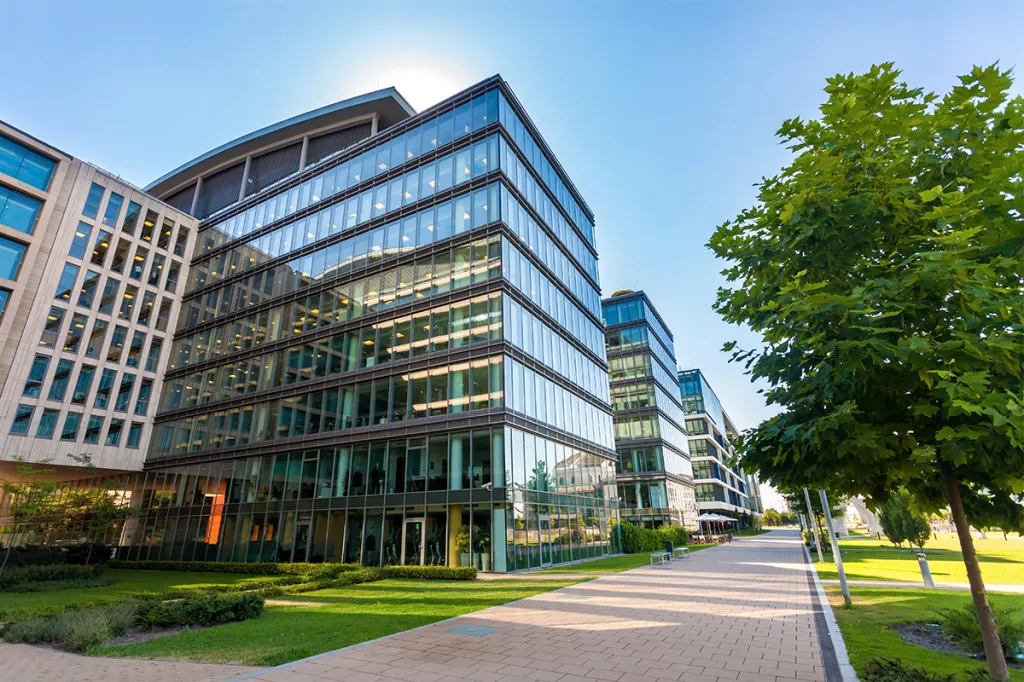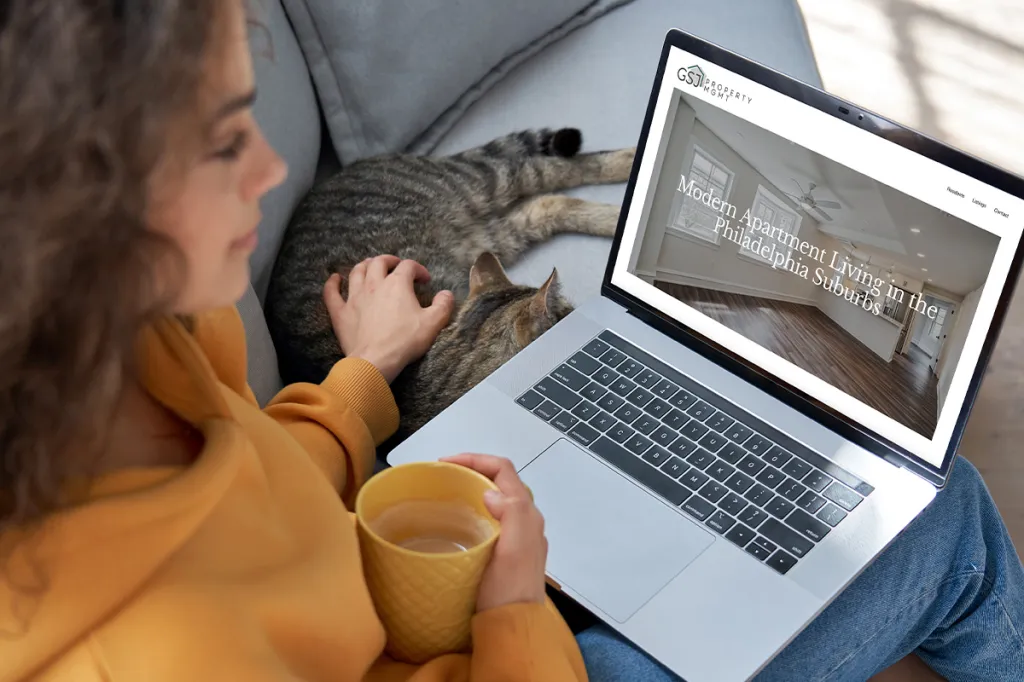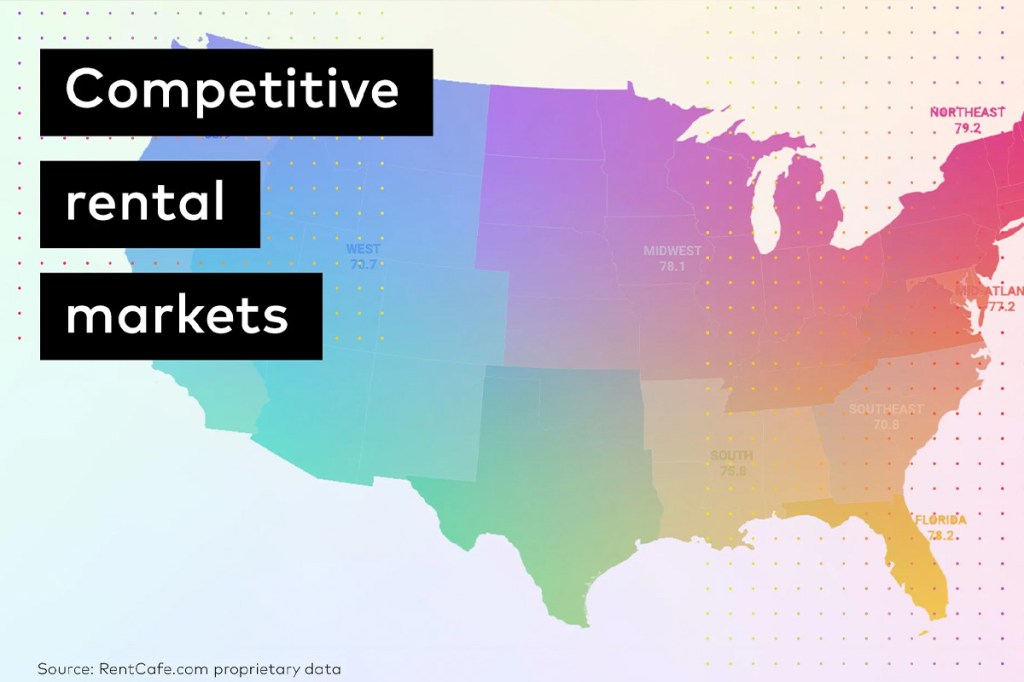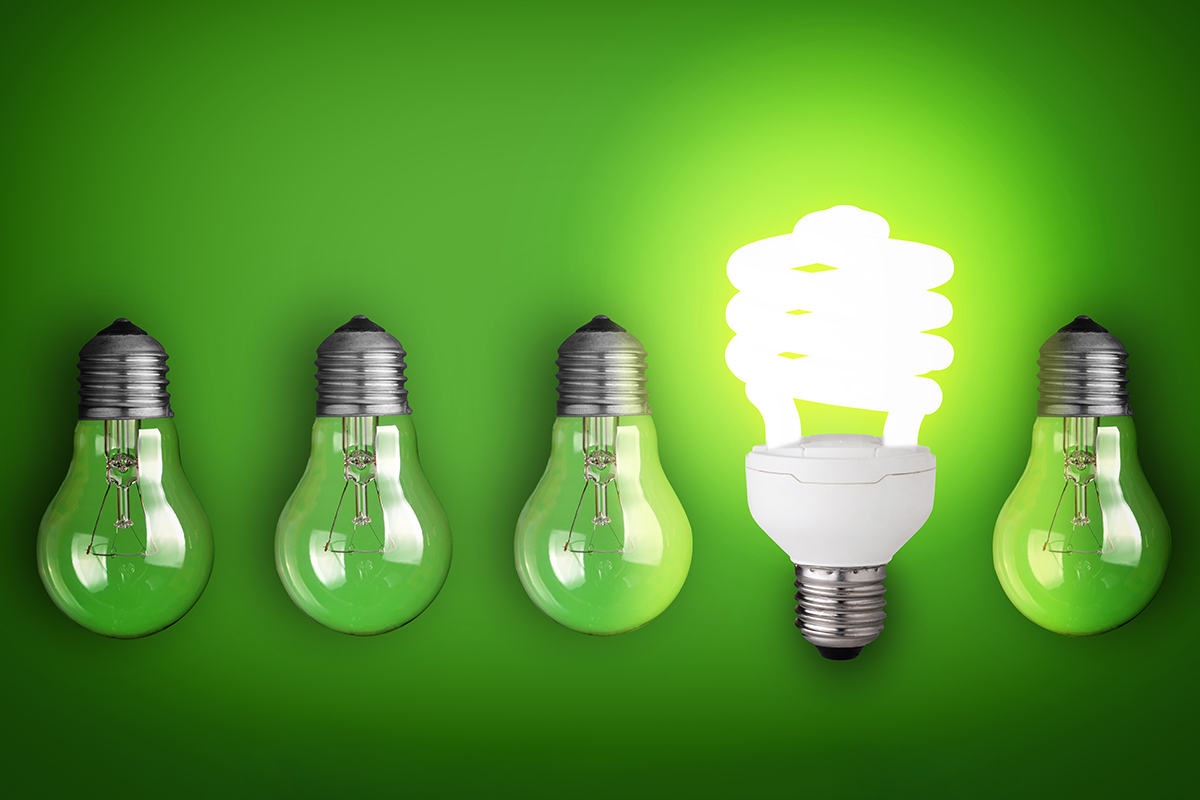
Many property managers are on the lookout for ways to save water and energy at their properties. And that’s important, because you and your residents could be facing higher-than-average energy bills this year and in years to come. In fact, the average summer temperature has risen at least .32 degrees per decade since 1981. Even in the face of rising apartment utility costs, there are many ways to save water and energy at your properties.

1. Offer energy-efficiency kits to welcome new residents
Move-in kits are always a great way to welcome new renters on their first day. It sets a positive tone that can carry over to all future interactions. An energy-efficiency kit goes even further, showing your residents that you’re there to help them lower their bills and environmental impact. Kits can contain energy-efficient lightbulbs, low-flow shower heads, smart thermometers, etc.
If anything in the kit requires installation, it’s better to have that done in advance, but let them know what new amenities you added before they moved in. They’ll love to hear about it!
2. Turn lights off when you leave the room
This one’s easy. Make it a habit to flip that switch when you leave any room and ask your residents to do the same. Put a note above light switches in common areas as a friendly reminder.
3. Switch to low-flow showerheads & toilets
Low-flow devices help save water and energy at your properties. A standard showerhead may use up to five gallons of water per minute. A low-flow device may use only two gallons per minute. Showerheads are inexpensive upgrades that begin to pay off immediately.
Low-flow devices actually provide the same water flow with less water. A standard shower head puts out about five gallons of water per minute. A low-flow shower head may only use two gallons in that time. Low-flow shower heads are inexpensive, so you can expect to reduce water use and save money right away.
Likewise, low-flow toilets use pressure-assistance to remove waste. That loud, telltale “whoosh” indicates a low-flow toilet. They save energy because toilets make up 30% of the average household’s total water use. That’s more than any other source of residential water use. Most commercial properties and highly trafficked locations like airports use these designs.
4. Place a brick in the toilet
Maybe this one needs an explanation. A rubber brick can be used to displace water in the toilet tank. This will reduce the amount of water used by about a half-gallon per flush (that can quickly add up) and shouldn’t make the toilet less effective at its job. Unlike real bricks, these rubber bricks won’t dissolve over time when submerged or release damaging particles into your pipes. You won’t risk cracking porcelain with them, either.
5. Plant drought-tolerant grass, trees & greenery
States that experience long periods of drought and/or receive little rainfall may have laws limiting water use for gardening and landscaping. Some plants are drought-tolerant, which means they need very little water to grow and thrive. Examples of drought-tolerant plants include agave, cactus, lavender and our favorite for both color and simplicity, bougainvillea.
6. Water plants with recycled gray water from washing machines
“Gray water” may not have the most appealing look or name (it’s gray — surprise, surprise) but it’s perfectly safe to use to water plants, crops, lawns, etc. Sometimes spelled greywater, it comes from used water from washing machines. A greywater system redirects used laundry water to a separate receptacle or straight to your watering system.
Learn more about gray water systems
7. Install smart thermostats
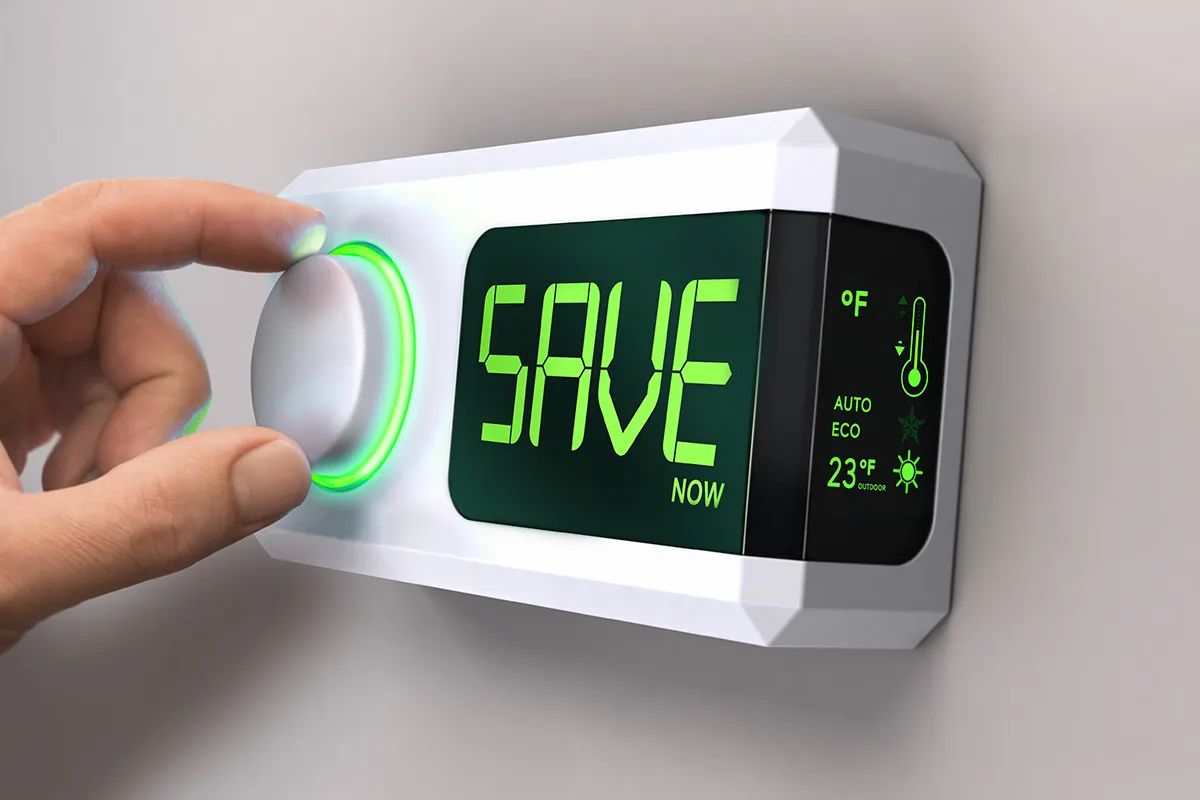
We mentioned these can be part of a welcome kit to help your residents save energy. Smart thermostats make great upgrades to your units for several reasons:
- They connect to mobile devices via Wi-Fi
- Residents can see if they left lights on, then turn them off from anywhere
- Temperature can be set automatically or adjusted on-the-go
- They help you stand out from the competition
8. Cool rooms with natural ventilation
Some properties can take advantage of the wind to cool down individual rental units. A cross-breeze is a form of natural ventilation. The way it works is simple. When wind blows in through one window, the unit acts as a vacuum, funneling the breeze through to another window.
9. Use fans to create a cross-breeze
You can increase the effect of natural ventilation by strategically positioning fans. Place window or tower fans facing out. Some people don’t realize this can lower temperatures better than blowing hot outdoor air into a room. Better yet, let one fan push outside air into the room while the other pushes air back outside. This is the best way to create an effective cross-breeze.
10. Utilize solar panels
Solar is the cheapest and most renewable source of energy on the planet. If you want to save energy (and a lot of money in the long run), these panels are a smart option. Depending on how many properties you need to upgrade, setup can quickly reach the tens or hundreds of thousands of dollars.
Don’t let that scare you away. The U.S. Department of Energy has a solar energy calculator that helps you see the value of using solar energy at your properties. The average single family home will use a 5kW panel system that costs about $14,000 to install (after tax credits). On average, it takes six to nine years to recoup those costs.
Solar panels help increase the value of your properties. They’re low-maintenance and save a lot of money over time. Also, solar energy is an attractive feature to eco-minded renters.
11. Don’t use air conditioning at night
Air conditioning is one of the biggest energy drains at your properties. Some people like to stay cool at night, so they run the A/C to help them fall asleep. Here are a few reasons to encourage your residents not to do this:
- It’s expensive for them to run the air conditioning every night.
- Once asleep, they’re probably not going to feel the benefit of the cool air, so they’re racking up a higher electric bill for no reason.
- Temperatures are likely to drop over the course of the night, hitting their lowest points sometime around dawn.
Instead, multiple fans can be used to create an artificial breeze or push a cross breeze from outside. This costs pennies on the dollar compared to air conditioning.
12. Use fans instead of A/C
There may be some days that would be unbearable to spend indoors without A/C. And if you’re working remote, we’re not saying you need to suffer for the sake of your bills. However, electricity is more expensive in the middle of the day — most people’s peak work hours. If you or your residents are looking to use less energy and save on your electric bills, place a few fans around your workspace for a pleasant cross breeze. Doing so could let you get away with less A/C.
13. Use high-efficiency (HE) laundry machines
Modern washing machines are much more efficient than older models. HE machines were first popularized in Europe, but they’ve found success in the United States, and we’re all better off for it. If you have on-site laundry at your properties, consider HE machines. They often use half as much water as standard units. Just make sure your residents know to always use HE detergent, which is concentrated for use in low-water machines.
If your multifamily building offers on-site laundry, HE machines will save a lot of water. Efficient top-loaders use as little as 13 gallons per load. Front-loaders use the least amount of water—as little as seven gallons of per load. If you want a machine that’s easily identified as being highly efficient,
14. Run appliances during off-peak hours
It’s more expensive to run electronics and do laundry during the busiest hours of the day (aka peak hours). Electricity is cheaper during off-peak hours, which tend to be early morning and later at night. It’s not always possible to stick to these hours, but residents who try might see a difference in their monthly bills. (This won’t save water and energy, per se, but it puts less stress on the electrical grid and can help you and your residents save money.)
15. Run laundry & dishwasher at the same time
Water heaters use more energy heating up water than they do keeping it hot. That means you can save water and energy (and money too!) by running multiple appliances at the same time. The water heater will have to work a little harder to keep up with the demands of two or more appliances, but it will only have to do that once. (This one doesn’t apply to multifamily residences with on-site or off-site laundry facilities.)
Pro tip: It’s better to do one full load of laundry by itself than a half-load timed with the dishes.
16. Collect gutter drainage for reuse
If you live in an area that experiences moderate to heavy rainfall, it’s easy to collect runoff in a rain barrel. Recycled water can be used to wash cars, water plants, etc.
17. Keep grass a little longer than usual
Did you know that long grass holds moisture better than short grass? That means longer grass doesn’t need to be watered as often. Adjust lawnmower blades or request your landscaper to do so. Some cities, neighborhoods and housing associations have limits on grass length, so be sure not to exceed that length.
And remember, grass that gets too tall is a welcome sight for mama rabbits and other small mammals. Baby bunnies are cute, but it’s not so cute when you have to stop mowing until your uninvited furry creatures leave the nest. (Also, animals tend to tear out chunks of lawn when making their dens.)
18. Unplug electronics when not in use
This is one of the simplest ways to save energy at your properties, but it’s also one of the trickiest to remember. After all, people are busy, and we use quite a few electronics. If your residents had to plug and unplug individual devices before each use, they’d probably go crazy. That’s why smart power strips are so useful. They also eliminate vampire loads, which is electricity that is “drained” (hence, vampire) when a device is plugged in but not in use.
19. Place mirrors to “bounce” sunlight into different rooms
You don’t need as many lights as you think to have well-lit units. Even when natural sunlight is available, some rooms have dark spots that require additional light. In some cases, mirrors can be strategically placed to catch sunlight and bounce it from mirror to mirror.
Pro tip: Bright walls also help reflect light.
20. Keep air vents free of blockages
If air can’t circulate efficiently, your heater and A/C will work harder than normal to adjust the temperature. Residents should make sure that furniture, shelves, boxes, toys, etc. do not obstruct vents.
21. Don’t rinse dishes before putting them in the dishwasher
Dishwashers come with effective drains, and newer models are especially effective at blasting off grease and stuck-on particles. It’s common for people to rinse their dishes before putting them in the dishwasher, but this is usually an unnecessary use of water. Instead, scrape plates with a dish-safe brush.
22. Lower the shades or close the blinds
This one is simple. When sunlight enters a room, you get both heat and light. By blocking or partially deflecting that light, you create shade and cool down a room. To help residents save energy, make sure your properties have adequate blinds or curtains.
23. Raise the temperature on your refrigerator
Some people prefer colder food and drink, but 40 degrees or lower is recommended by the FDA. Anything higher than 40 isn’t safe, but lower temperatures will use more energy. Refrigerators are one of the biggest energy-consumers in a home or apartment, if not the biggest. A few degrees can drastically reduce costs and help save energy at the property.
24. Turn off A/C & fans when you’re not in the room
If your properties have smart thermostats and/or lights, it’s easy to save energy when no one is in a room. Lights and air vents will automatically shut off in rooms that aren’t in use. If you don’t have smart tech like this, encourage your residents to manually close vents in rooms they don’t use very often.
25. Save energy at your properties with more efficient appliances
If you manage older or unrenovated properties, you could be spending a small fortune on energy bills. Modern appliances use significantly less electricity, and they’re much more efficient than older models. Specifically, look for ENERGY STAR® certified air conditioners, refrigerators, washers, dryers, light bulbs, water heaters, dishwashers, heat pumps and other appliances. They can help you and your residents save money and use less energy.
Yardi Given ENERGY STAR® Partner Of The Year Sustained Excellence Award By EPA
26. Keep your freezer full
Full freezers absorb cold air, so the unit uses less energy to keep food cold. That’s as good an excuse to stock up on frozen pizzas as we’ve ever heard.
27. Don’t use the heat dry function on dishwashers
The drying function on dishwashers isn’t necessary, and it can raise your electric bill. If water spots annoy you or you have a fancy event coming up and don’t want spotty glassware, there are other ways to clean cloudy glass. (The dishwasher isn’t the best way to remove water spots, anyway.)
28. Don’t let the bathroom faucet run
Whether you’re brushing your teeth, washing your hands or scrubbing your face, run the faucet for as little time as possible. Wet your toothbrush, hands or face, then shut off the sink. It may seem like a small amount of water, but this small change in behavior adds up to big savings over time.
29. Dip razors in a cup of hot water or use the sink plug
It’s easy to shave without letting the water run. Whether you’re sitting on the edge of the tub or standing in front of the mirror, a cup of hot water works just as a well as a running faucet.
30. Don’t waste too much water waiting for the shower to heat up
Some showers take time to get warm enough to stand it comfortably. If this is an issue at your properties, consider a larger or more efficient water heater. Residents may even walk away as the water heats up instead of waiting for the precise moment it gets warm enough, which risks wasting even more.
31. Skip baths, shower instead
Baths use about 30 gallons of water. Low-flow showerheads use about two gallons per minute, so you would have to shower for 15 minutes to use as much water as a bath.
32. Limit time in the shower
With a low-flow showerhead, a 10-minute shower will save a lot of water over time. With a standard showerhead, you can still save water, but you’ll have to keep your time under 10 minutes — any longer and you’ll be using as much water as a bath.
33. Unplug mobile devices once they’re charged
When charging phones, tablets and laptops, there’s no need to keep them plugged in once they’re at 100%. In fact, doing so just increases your electric bill and strains the device’s battery. Save energy by unplugging devices until they fall to about 25% power.
Pro tip: Try not to let your electronics with lithium-ion batteries fall to 0% charge. It’s bad for them and ultimately requires more energy to get them charged back up.
34. Lower the maximum water temperature
Default water heater temperature is often 140-170 degrees. That’s really hot! Lower the maximum to 120 degrees to save water and energy at your properties. And don’t worry: Many modern dishwashers are able to independently boost temperatures above 140 degrees in order to sterilize dishes.
35. Sweep patios & driveways
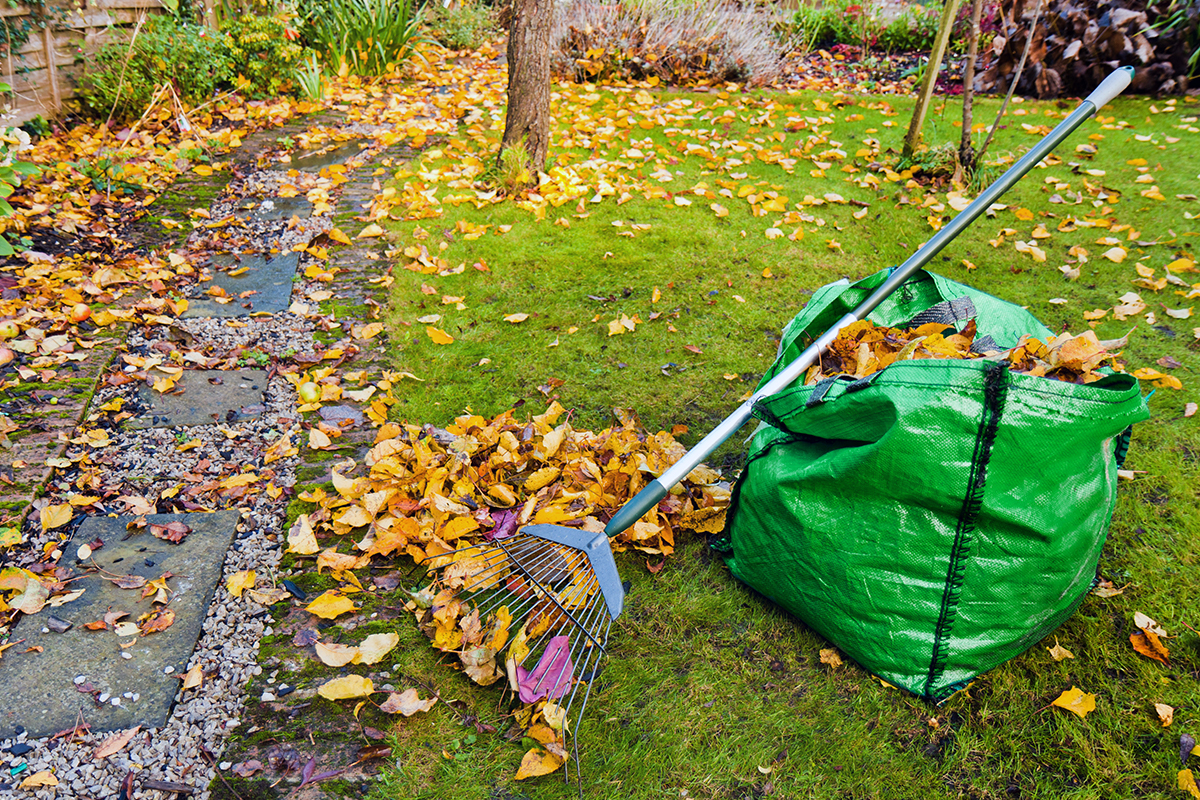
Leaves can clutter patios, decks and driveways, making it tempting to blast them away with a hose. Instead, save water and energy by sweeping or raking fallen leaves. It’s good exercise too!
36. Be mindful of how you flush
It’s not necessary to flush the toilet after every use (user discretion advised). And if it’s time to install a new toilet in a unit or common area, consider going with a low-flush model. Dual-flush toilets include light and heavy flush options.
37. Wash your hands
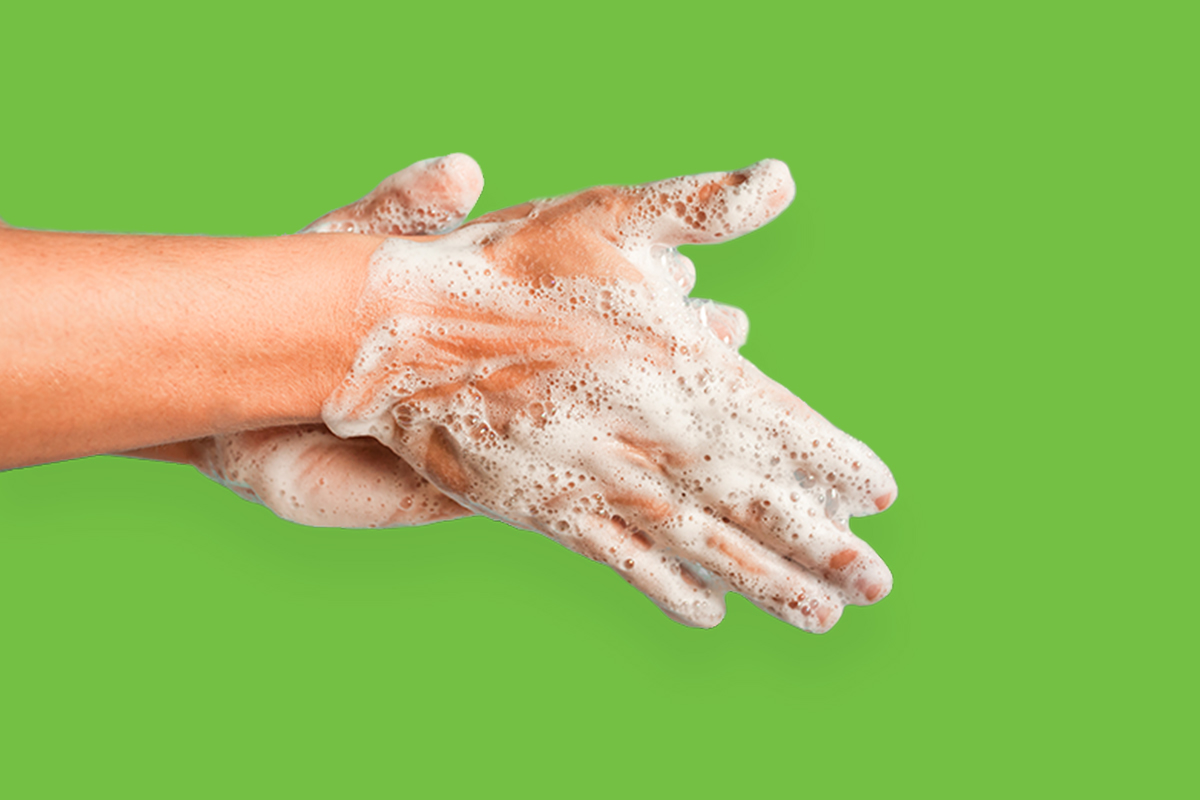
While we’re on the subject of bathrooms, here is your friendly reminder to always wash your hands with water that’s at least 100 degrees or as hot as you can stand. Health and public safety take precedence over saving water and energy. You can even collect the cold water while it heats up. Use it to water plants, or if you’re in the kitchen, capture that cold water in a pot to boil pasta or vegetables or refill your filtered water pitcher.
More health tips for you: 12 Proven Ways To Prevent Cold & Flu In Multifamily Residences & Commercial Offices
38. Run water on low until it heats up
Let’s say you’re trying not to waste water, but your hands are contaminated, and you don’t want to touch anything other than the faucet while the water heats up. Run the minimal amount of water necessary for it to get hot. Don’t just blast it and watch needless gallons swirl down the drain.
39. Switch to energy-efficient LED lights
Lightbulbs aren’t what they used to be — and that’s a good thing. It’s easy to find long-lasting LED lights that use much less energy than incandescent lights. LEDs can be more expensive, but they last for years and help you save energy at your properties.
40. Remove lint after every dryer load
Lint catchers keep your clothes cleaner, but they’re less effective when full. Lint is extremely flammable, so changing the filter after every load prevents lint clogs, keeps dryers efficient and prevents a potential fire hazard.
41. Encourage residents to review & track their energy use
Electric companies mail usage reports with every bill. These can often be found online as well. Your residents can track their energy use over time, and sometimes they can even see how their bill stacks up against the rest of the property.
42. Don’t open the oven door while food is cooking
Some foods (cakes, bread, pies, etc.) can be negatively affected if the oven door is opened mid-bake. So that’s one reason to keep the door closed while food is baking. Another reason: you’re letting out the hot air. Temperatures may drop 25 degrees every time a door is opened, which means the oven must work harder to get back to the desired temperature.
43. Don’t dilly-dally in front of an open fridge
Just as heat escapes an open oven, cold air gets out of a fridge or freezer quickly. Don’t stand there trying to decide what you want with the door open. (You’re probably just as good of a thinker with the door closed.)
44. Hang a clothesline or hang wet clothes on racks
If your residents want to save energy and money, encourage them to hang wet clothes when possible. If space is an issue, indoor drying racks are an inexpensive alternative to outdoor lines.
45. Take cool or cold showers
Most of us love hot showers, but there are a couple of downsides to them. It takes time for them to heat up, so you’re wasting water while you wait. Also, hot water uses more energy than cold water.
Cold water, on the other hand, has benefits that go beyond helping you save water and energy at your properties.
- It reduces itchiness and inflammation
- It’s invigorating (great for sleepy risers)
- It increases circulation
- It can relieve muscle aches and post-workout stress
When it comes to cold showers, the colder, the better. Plus, you’re more likely to take shorter showers when you’re a bit chilly.
Pro (hair) tip: Shampoo and condition in hot water to get your hair clean, then rinse out in cold water to lock in moisture and color.
46. Try to shower less often
To save water and energy during a hot spell, try to get in your workout in first thing in the morning. It’s a great way to start the day and helps prevent the need for a second shower later. But when it’s hot, you may feel sweaty and tired by the afternoon. However, there are simple ways to reduce how much you sweat, which can encourage you to shower less often.
- Buy quick-dry shirts
- Wear comfortable, breathable shorts
- Go sockless
- Wear materials that wick away moisture
- Splash your face with cold water when you’re hot (double points if you use water collected from shower or faucets)
47. Put computers in sleep mode & turn off monitors
Every little bit counts. Turn off computer monitors and put laptops in sleep mode when you’re not using them. It takes mere seconds to start everything back up.
48. Heat up leftovers in a microwave
It takes less energy to use a microwave than an electric oven or stovetop. That makes them energy and time-efficient choices for reheating leftovers.
49. Charge electric vehicles at night
Electricity is cheaper at night, and an electric vehicle is probably going to be a resident’s highest consumer of electricity. If they have garages and personal chargers, encourage them to charge their vehicles during off-peak hours.
50. Weatherize or winterize windows & doors
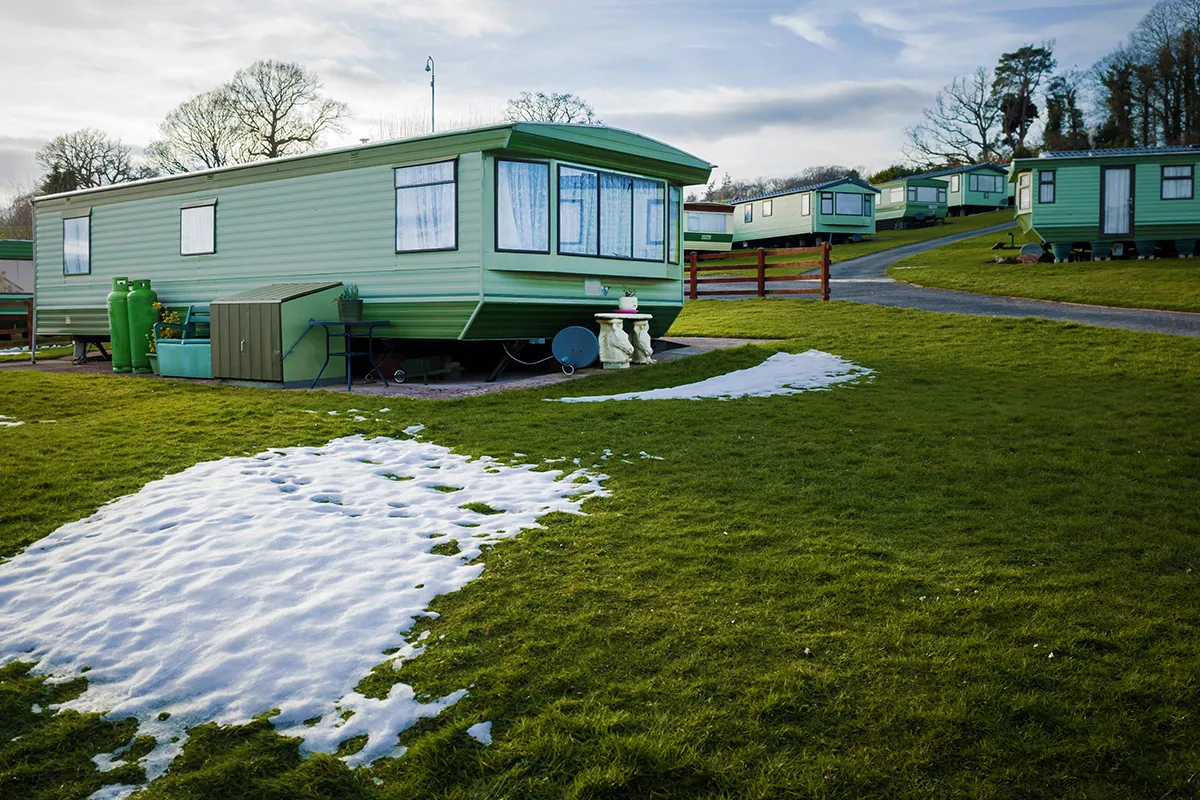
Always seal the edges of windows, because those gaps make it easy for indoor air to escape and outdoor air to leak in. It’s especially important to winterize manufactured homes because they’re prone to air leaks.
51. Go paperless with property management software
Eliminate paper with online property management software. Paper applications, leases, receipts and other documents take up space and are easy to lose or misplace. Software like Yardi Breeze is a natural fit for property management companies looking to save energy. Because it’s cloud-based, every interaction takes place online, which eliminates scanning and processing paper applications, paper checks, paper communications, etc. Everything is done conveniently online or through an app.
Communication can help save water & energy at your properties
Throughout this article, we encouraged you to pass these tips to your residents. You might be wondering how to best go about communicating. To help your residents save water and energy at your properties, we recommend email or text (as long as you have permission) in place of snail mail.
Consider printing and posting these tips in common areas such as your office or laundry room. They also make great social media content, especially if you pick a few to turn into short videos. By keeping your communications focused, relevant and engaging for your renters, you increase the chances of people reading and responding to your texts, emails and social media content. Ultimately, better communication pieces can help save water and energy at your properties.
